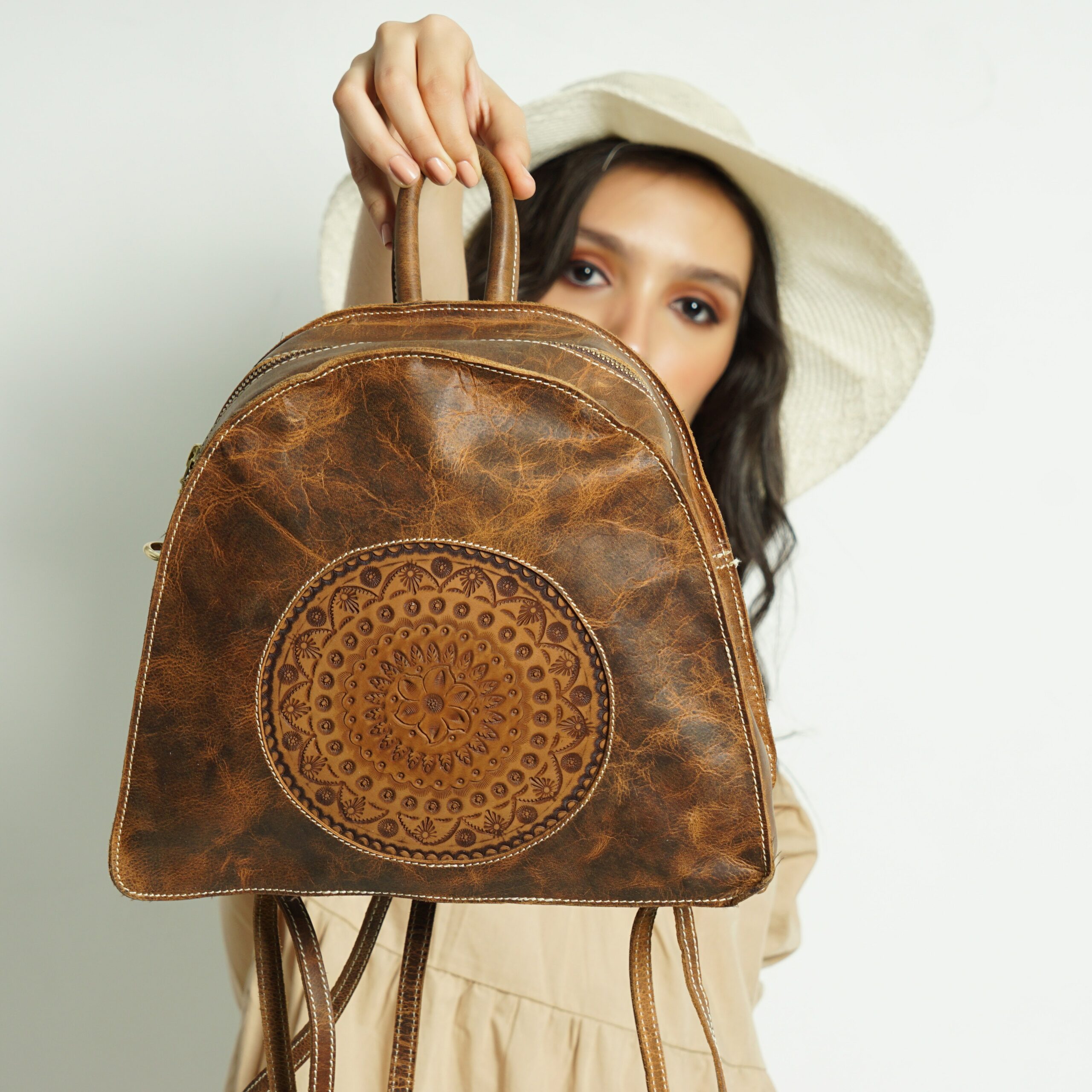
Vegan Leather
It’s no secret that the fashion industry is one of the most resource-intensive industries in the world. Leather is one of its heaviest drivers: it takes a lot of water and energy to raise cows, tan their hides, cut them into leather scraps, and sew them together into clothing. This causes a huge amount of greenhouse gas emissions. So many people are looking for an eco-friendly and sustainable alternative, and that is where vegan leather comes into play. It is not actually leather, but synthetic or plant-based materials, and it helps protect our planet without sacrificing comfort or style – and without harming animals!
History and Types of Vegan Leather
There are several types of vegan leather. One of the first was invented in Germany back in the 19th century, it was called „Pressstoff“ and made from layered and treated paper pulp. In the 1920s, an imitation leather called „Rexine“ was produced by a British company and used in cars, among other things. From the 1960s onwards, artificial leather was made from PVC. But as it requires highly toxic plasticisers, so-called phthalates, to make it soft, and many other harmful chemicals are used during its production process, PVC artificial leather is not vegan in the true sense of the word.
It was not until the 1990s that the fashion industry saw an increasing demand for types of artificial leather that had not harmed animals in their production and were also generally less harmful to humans and the environment. Today, common types of vegan leather are made from polyurethane instead of PVC, but according to PETA, vegan leather can be made from a vast variety of materials – cacti, pineapple leaves, cork, apples, mushrooms and many others.
If you’re looking for clothing made from vegan leather, you should always keep these latter plant-based source materials in mind, as their processing usually requires far fewer potentially harmful chemicals that could end up in the environment. Many of them are even produced without any toxic chemicals at all, and what’s more, plant-based artificial leathers are biodegradable.
Durability and Sustainability
Real leather is characterised by very high durability, but what about the different types of artificial leather? And durability is important, because it has an impact on the sustainability of a leather imitation.
But even if vegan artificial leather does not last quite as long as real leather, it is considerably more sustainable, because the amount of energy and water needed to raise livestock and produce leather is immense. In addition, a large amount of harmful chemicals are used in the tanning of real leather, which are often released chemicals into the environment. And tanning also means that the particularly durable types of natural leather are hardly biodegradable.
Artificial leathers made of PVC or polyurethane are also not biodegradable, but break down into microplastics. Furthermore, quite a few harmful chemicals are used in their production. And they are made from mineral oils, the extraction of which releases large quantities of greenhouse gases.
The faux leather varieties made from plants are clearly the best option when looking for vegan leather varieties.
Examples of Vegan Leather Types
Piñatex® is a type of artificial leather made from fibres of the pineapple plant. These fibres are a waste product of the normal pineapple harvest and are processed into textiles.
A particularly interesting type of artificial leather is Desserto®. It is made from the nopal cactus (which is also part of the local cuisine in Mexico, among other places) and is available in several colours and textures.
So…
So there are definitely vegan alternatives to genuine leather products. The most beneficial, sustainable and environmentally friendly are the artificial leather varieties made from plants. And even if they don’t last as long as real leather, the ecological benefits more than outweigh this – no animals are harmed in the production process, in many cases no harmful chemicals are used at all, and considerably less energy and water are used. And all this without sacrificing style!


